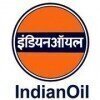Process Engineer
40+ Process Engineer Interview Questions and Answers for Freshers
Asked in Osmoflo Engineering Services

Q. Why is cation exchange performed before anion exchange in ion exchange processes, and not the other way around?
Cation exchange is done first in ion exchange because cations are more easily exchanged than anions.
Cations have a higher affinity for the exchange resin than anions.
Cations are generally smaller in size and have a higher charge density, making them more easily exchanged.
Anions are larger and have a lower charge density, making them less easily exchanged.
Cation exchange is often used to remove heavy metal cations from water, while anion exchange is used to remove anions like ...read more

Asked in Cipla

Q. How do the P/V ratio and tip speed affect the selection of scale-up, and what criteria do you use for this selection?
P/V ratio and tip speed impact scale-up selection in process engineering.
P/V ratio affects the level of shear stress in the system, influencing mixing and reaction rates.
Higher tip speeds can lead to increased shear forces and heat generation, impacting product quality.
Selection criteria include desired mixing intensity, heat transfer requirements, and shear sensitivity of the product.
For example, in pharmaceutical manufacturing, a lower P/V ratio may be preferred for shear-s...read more

Asked in Yazaki

Q. How much electricity is available in the house?
The question is not relevant to the job position of Process Engineer.
The question is not related to the job responsibilities of a Process Engineer.
The amount of electricity available in a house is not relevant to the job.
The question may be better suited for an electrician or energy specialist.

Asked in Cipla

Q. What calculations do you perform when transferring a new product from the lab to the plant?
Calculations include scale-up factors, equipment sizing, material compatibility, process optimization, and cost analysis.
Determine scale-up factors to ensure the lab process can be replicated in the plant
Size equipment appropriately for the larger scale production
Check material compatibility with plant equipment and process conditions
Optimize the process parameters for efficiency and quality
Conduct cost analysis to determine the feasibility of production at scale

Asked in Cipla

Q. What is tip speed, and how do you calculate it from the laboratory to the pilot plant?
Tip speed is the speed at the outer edge of a rotating object, calculated by multiplying the radius by the angular velocity.
Tip speed is the speed at the outer edge of a rotating object.
It is calculated by multiplying the radius of the object by the angular velocity.
In the laboratory, tip speed can be calculated using the formula: Tip Speed = 2 * π * Radius * RPM.
In the pilot plant, the same formula can be used to calculate tip speed, but with the actual values of radius and ...read more

Asked in Deep Industries

Q. What are the different types of relief valves, and how do you calculate their size?
Relief valves are of two types - pressure relief valves and safety relief valves. Their size is calculated based on the flow rate and pressure.
Pressure relief valves are used to protect equipment from overpressure and are typically set at a specific pressure level.
Safety relief valves are used as a last line of defense and are typically set at a higher pressure level than pressure relief valves.
The size of a relief valve is calculated based on the flow rate and pressure that ...read more
Process Engineer Jobs




Asked in Cipla

Q. What are heat transfer and mass transfer, and what is their significance?
Heat transfer is the movement of heat from one place to another, while mass transfer is the movement of mass from one place to another. Both are important in various engineering processes.
Heat transfer involves conduction, convection, and radiation.
Mass transfer involves diffusion, convection, and molecular diffusion.
Significance of heat transfer includes maintaining temperature in chemical reactors, HVAC systems, etc.
Significance of mass transfer includes separation processe...read more
Asked in Osmoflo Engineering Services

Q. Explain the pump curve and describe the energy conversions that occur within a pump.
Pump curve shows the relationship between flow rate, pressure, and power. Mechanical energy is converted to hydraulic energy.
Pump curve is a graph that shows the performance of a pump at different flow rates and pressures.
It helps in selecting the right pump for a specific application.
The curve shows the relationship between flow rate, pressure, and power consumption.
Mechanical energy from the motor is converted to hydraulic energy by the pump.
The hydraulic energy is then use...read more
Share interview questions and help millions of jobseekers 🌟


Asked in Atul

Q. What is the difference between a centrifugal pump and a reciprocating pump?
Centrifugal pumps use impellers to move fluid while reciprocating pumps use pistons or diaphragms.
Centrifugal pumps are more commonly used for high flow rate and low viscosity fluids while reciprocating pumps are used for low flow rate and high viscosity fluids.
Centrifugal pumps are generally less expensive and require less maintenance than reciprocating pumps.
Reciprocating pumps are better suited for applications where precise flow control is required.
Examples of centrifugal...read more

Asked in Deep Industries

Q. How do you calculate line sizing?
Line sizing is calculated based on the flow rate, pressure drop, and fluid properties.
Determine the required flow rate for the process
Calculate the pressure drop based on the length of the line and the fluid properties
Select a pipe size that can handle the required flow rate and pressure drop
Consider factors such as corrosion, erosion, and velocity limitations
Use industry standards and guidelines for pipe sizing
Perform iterative calculations to optimize the line size
Examples ...read more

Asked in Indian Oil Corporation

Q. What is the unit of current?
The unit of current is Ampere (A).
The unit of current is a measure of the flow of electric charge.
It represents the rate at which electric charges pass through a given point in a circuit.
Current is measured using an ammeter.
The SI unit for current is Ampere (A).

Asked in Chemfab Alkalis

Q. How will you determine the efficiency of a heat exchanger?
Efficiency of heat exchanger can be found by calculating the heat transfer rate and comparing it with the maximum possible heat transfer rate.
Calculate the heat transfer rate using the formula Q = U*A*ΔTlm, where U is the overall heat transfer coefficient, A is the heat transfer area, and ΔTlm is the log mean temperature difference.
Calculate the maximum possible heat transfer rate using the formula Qmax = m*Cp*ΔT, where m is the mass flow rate, Cp is the specific heat capacit...read more

Asked in UPL

Q. What are the design steps for a shell and tube heat exchanger?
Design steps for a shell and tube heat exchanger
Determine the heat duty and fluid flow rates
Select the appropriate materials for the tubes and shell
Determine the number of tube passes and tube layout
Design the baffles and tube supports
Calculate the heat transfer area and pressure drop
Specify the inlet and outlet connections
Prepare detailed fabrication drawings

Asked in Cipla

Q. What actions have you taken in troubleshooting?
I have taken various actions in troubleshooting, including analyzing data, conducting experiments, and collaborating with team members.
Analyze data to identify potential issues
Conduct experiments to test hypotheses
Collaborate with team members to brainstorm solutions
Utilize problem-solving skills to troubleshoot complex problems

Asked in Cipla

Q. What is HAZAOP, and what is the procedure for it?
HAZOP stands for Hazard and Operability Study, a systematic method to identify potential hazards and operability issues in a process.
HAZOP is a structured and systematic examination of a process to identify potential hazards and operability issues.
It involves a team of experts analyzing the process step by step to identify deviations from the design intent.
The team uses guide words such as 'no', 'more', 'less', 'as well as' to brainstorm potential deviations and their consequ...read more

Asked in Deep Industries

Q. How do you troubleshoot cavitation in a pump?
Cavitation in pumps can be troubleshooted by identifying the root cause and taking corrective actions.
Check for low suction pressure or high discharge pressure
Inspect the impeller and casing for damage or wear
Ensure proper alignment of the pump and motor
Verify that the pump is properly primed
Consider changing the pump design or increasing the size of the suction pipe
Install a cavitation eliminator or inducer
Monitor the pump performance regularly to detect any issues early on

Asked in Bosch

Q. Machine opration in cutting in nozzle body horizontal and vertical side
Machine operation in cutting in nozzle body horizontal and vertical side.
The machine should be set up to cut the nozzle body horizontally and vertically.
The cutting process should be precise and accurate to ensure proper functionality of the nozzle.
Proper safety measures should be followed during the operation.
Regular maintenance and calibration of the machine is necessary to maintain cutting quality.
Examples of machines used for cutting nozzle bodies include CNC machines, la...read more

Asked in Cipla

Q. What are Power Number and Flow Number?
Power Number and Flow Number are dimensionless numbers used in fluid mechanics to characterize the flow behavior of fluids in different systems.
Power Number is a dimensionless number used to characterize the power consumption in a mixing system. It is defined as the ratio of the power input to the fluid to the product of the impeller speed, impeller diameter, and fluid density.
Flow Number is a dimensionless number used to characterize the flow behavior of fluids in a mixing s...read more
Asked in Yingtong Electronic Technology India

Q. What is 5s and what is 8westage
5s is a methodology for organizing a workplace for efficiency and effectiveness. 8waste refers to the eight types of waste in a process.
5s stands for Sort, Set in order, Shine, Standardize, Sustain. It helps in organizing the workplace and improving efficiency.
8waste includes defects, overproduction, waiting, non-utilized talent, transportation, inventory, motion, and extra-processing. Identifying and eliminating these wastes improves process efficiency.

Asked in iOG Solutions

Q. Catalytic crackers reformers and software’s in refineries
Catalytic crackers and reformers are key units in refineries for converting heavy hydrocarbons into valuable products. Software is used for monitoring and optimizing these processes.
Catalytic crackers are used to break down large hydrocarbon molecules into smaller ones, such as gasoline and diesel.
Reformers are used to convert low-value hydrocarbons into high-value products like hydrogen and aromatics.
Software in refineries is used for real-time monitoring of process paramete...read more

Asked in Cipla

Q. How do you calculate distillation rate?
Distillation rate can be calculated by dividing the amount of distillate collected by the time taken to collect it.
Calculate the amount of distillate collected in a given time period.
Divide the amount of distillate by the time taken to collect it to get the distillation rate.
Express the distillation rate in units such as liters per hour or gallons per minute.

Asked in UPL

Q. What is HAZOP, MSDS?
HAZOP is a hazard and operability study, while MSDS is a material safety data sheet.
HAZOP is a systematic and structured approach to identify potential hazards and operability problems in a process plant.
MSDS is a document that provides information on the properties of hazardous chemicals and how to handle them safely.
HAZOP involves a team of experts analyzing the process design and identifying potential deviations that could lead to hazards or operational problems.
MSDS inclu...read more
Asked in Satynam Interior And Design

Q. How do you ensure product quality?
Quality of product is ensured through rigorous testing, adherence to standards, continuous improvement, and collaboration with cross-functional teams.
Implementing quality control measures throughout the production process
Conducting regular inspections and audits to identify and address any issues
Utilizing statistical process control techniques to monitor and improve product quality
Collaborating with suppliers to ensure raw materials meet quality standards
Incorporating custome...read more

Asked in UPL

Q. What is the pressure drop in the column?
Pressure drop in a column refers to the decrease in pressure as fluid flows through the column.
Pressure drop is caused by frictional resistance to flow and changes in direction of the fluid.
It can be calculated using Bernoulli's equation or by measuring pressure at different points in the column.
Pressure drop can affect the efficiency of the column and may require adjustments to the operating conditions.
Factors that can affect pressure drop include column diameter, packing ma...read more

Asked in Deep Industries

Q. What is NPSH Available?
NPSH Available is the amount of fluid pressure available at the suction of a pump.
NPSH Available is the difference between the absolute pressure at the suction of the pump and the vapor pressure of the fluid being pumped.
It is important to ensure that the NPSH Available is greater than the NPSH Required for the pump to avoid cavitation.
NPSH Available can be increased by increasing the pressure at the suction of the pump or by decreasing the temperature of the fluid being pump...read more

Asked in Lupin

Q. What is qualification?
Qualification refers to the skills, knowledge, experience, or credentials that make an individual suitable for a particular job or task.
Qualification can include educational degrees, certifications, relevant work experience, and specific skills or competencies.
It is important for a process engineer to have a degree in engineering or a related field, such as chemical engineering.
Certifications in process improvement methodologies like Six Sigma can also be valuable qualificati...read more

Asked in Aarti Industries

Q. Explain Chemical Engineering Thermodynamics ?
Chemical Engineering Thermodynamics is the study of energy and its transformations in chemical processes.
It involves the analysis of heat transfer, work, and energy flow in chemical systems.
It helps in understanding the behavior of chemical reactions and the design of efficient processes.
Thermodynamics principles are used to optimize process conditions and maximize energy efficiency.
Examples include calculating heat transfer in a heat exchanger or determining the equilibrium ...read more
Asked in Factocad Robotics and Automation

Q. What is the 3-2-1 principle in GD&T?
The 321 principle in GD&T refers to the rule that a feature must be within a specified tolerance zone defined by three datums.
321 principle states that a feature must be located within a tolerance zone defined by three datums
The first datum constrains movement in one direction, the second datum constrains movement in a second direction, and the third datum constrains movement in a third direction
This principle ensures that the part is properly positioned and oriented relative...read more

Asked in Chemfab Alkalis

Q. 2. Important interlocks & Flare systems
Interlocks and flare systems are crucial for safety in process engineering.
Interlocks prevent equipment from operating outside of safe parameters.
Flare systems are used to safely dispose of excess or dangerous gases.
Interlocks and flare systems work together to prevent accidents and protect personnel.
Examples of interlocks include pressure switches, temperature sensors, and flow meters.
Examples of flare systems include elevated flares, ground flares, and enclosed flares.

Asked in Jindal Stainless

Q. What is your field of study?
I am a Chemical Engineer specializing in process engineering.
Specialize in designing and optimizing processes for chemical plants
Knowledge of chemical reactions, thermodynamics, and fluid dynamics
Experience with process simulation software like Aspen HYSYS
Worked on projects involving distillation, reaction kinetics, and heat transfer
Collaborated with cross-functional teams to improve production efficiency
Interview Questions of Similar Designations
Interview Experiences of Popular Companies








Reviews
Interviews
Salaries
Users

















